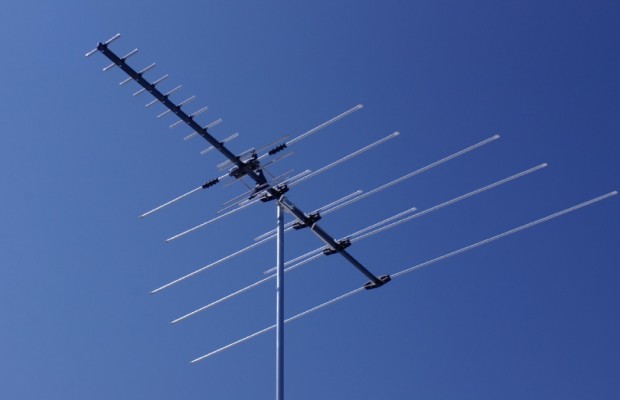Once we’re speaking about picking the best digital TV antenna, we should consider that the user already has a digital TV box or a TV with an integrated digital tuner at home. Besides, the user should know for sure that there is a good signal being transmitted in the area where he or she is planning to enjoy TV channels.
Actually I didn’t want to insult any of you by providing this perfectly obvious information. I did it only to prevent frustration among those who still think that buying a “proper” antenna is all you need to have TV at home. I can assure you, this is not exactly true.
Moreover, I would also advise you not to spend money on new equipment. In fact, your old antenna can be a perfect instrument allowing you to receive TV signals.
If you haven’t had any troubles in receiving analog TV signals in UHF diapason with your antenna before, it is more likely that receiving digital TV signals will be quite possible as well. All you need to do is to connect your antenna to your TV set and start scanning for available channels.
Why did I say it was “more likely” though? Because there are issues, of course, which can turn the whole process into a mess. Have you ever heard of the term “altitude above the sea level” or have you been aware of the altitude difference between your house and the location of available TV towers transmitting TV signals?
Probably you would want to study the digital TV signal coverage map and readjust the antenna for a different retranslator. The antenna you have may turn to be too “weak” or rather too “strong” for good signal reception, and you should know how to deal with it.
After you’re done with my post, I recommend you to read the following article, where you can find reviews on best outdoor antennas for HDTV.
So which antenna is the best choice for your particular situation?
Communal antenna
If you live in an apartment house and there is a communal antenna, first of all, try to connect to this antenna. If you managed to get the signal, we’re glad for you!
If you fail to find the signal, try to apply to a local broadcasting company, which can help you deal with this problem. Or you can use your own antenna as an alternative.
Outdoor antenna
Sometimes your indoor antenna may be too weak. Or you may realize that the distance is too long to receive a good signal with an indoor antenna. This is where outdoor antenna will be your salvation. First, check out if there is an old antenna already fixed on the roof, balcony, or exterior wall, then you may try to use it. If there is no antenna, it’s time to go shopping and get one.
So, what do you need to consider when buying an outdoor antenna? First, you need to study the signal coverage map and determine the distance from the antenna to the nearest retranslator you’re going to get the signal from.
When choosing the right antenna, consider the retranslator’s signal strength. The tower power determines the signal reception area.
If the area you’re living on is not a plain, then you might need to learn the difference in altitude between your house and available retranslators transmitting TV signal.
It is more advisable to choose a passive outdoor antenna instead of an active if we’re speaking about connecting it to a single TV set, like in case with an indoor antenna.
When you need to split the signal for two TV sets, use an active antenna, which is equipped with a signal amplifier. If possible, try to pick the model with an adjustable amplification.
Try to pick antennas made for a UHF diapason only. If you’re planning to watch both analog and digital TV channels, buy all-wave antenna supporting both diapasons, meter (MB VHF) and decimeter (UHF).
There is one more factor you need to consider after you bought the antenna with proper parameters. We’re speaking now about the height of antenna installation. There are cases when even the most powerful antennas could not receive the signal, because they were positioned too low. But it is enough to locate the unit a couple of meters higher for better signal reception, even if the antenna is not too strong.
International standards of reliable TV signal reception area are published according to the height the antenna is positioned.
- For rural areas — not less than 10 m
- For suburbs — not less than 20 m
- City (town) areas —not less than 30 m
So the best point here is to install the antenna on the highest position possible, which is usually the roof.
